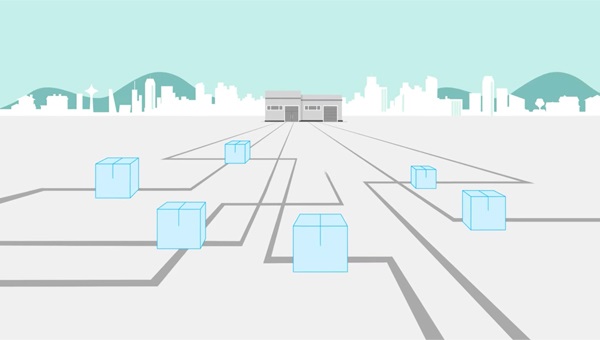Six things to consider when choosing a Delivery Route Planning Solution

In this article, we'll discuss two key route planning phases as well as six crucial considerations for finding the best solution for you.
When selecting a delivery route planning service, businesses should focus on answering the following critical questions:
There are two distinct phases to managing delivery route planning.
The first step is creating as efficient a route plan as possible, that utilises your vehicles and satisfies your customer’s demands.
The second step is to ensure it will work in the real world, allowing for traffic and time, as well as the volume of the vehicles.
Understanding route planning processes
Manually calculating delivery routes can be a very time-consuming job, with the correct route scheduling software the process can become very exact in very little time and you will also have an efficient solution that is as cost effective as possible.
The processes around delivery route planning can be very challenging, with day-to-day changes and varying delivery requirements adding to the overall complexity. A customer might change the day an order needs to be delivered at the last minute or traffic issues can cause a significant impact to the days schedule and expected delivery costs. New ways also need to be found to create efficiencies and improve margins while counteracting the increasing costs of delivery due to rising fuel prices and other factors.
Using a smart solution
With a regular customer delivery base that can be spread across the country, companies need to consider smart solutions to plan those deliveries and the frequency of deliveries that keeps their trucks utilised to the maximum. Companies can stand to benefit the most by concentrating on the most influential route productivity factors such as, maximising the capacity of a vehicle, the density of deliveries on a route, decreased drive times, route lengths, fuel consumption, speed limits of the roads, time for unloading and customer requirements.
However, these factors also need balancing against drivers’ hours and labour costs while keeping workloads balanced across depots and fleets. A time consuming and almost impossible job to do manually, once the number of vehicles gets above 10 manually calculating routes is almost impossible within a suitable time frame.
1. Does the solution have an easy to use, intuitive and ergonomic user interface?
Regardless of your knowledge about information technology, an intuitive and easy to use interface means that the operators are more likely to adapt to the system faster and to produce the best results, obtaining the full benefit of the solution in as short a timeframe as possible.
2. A powerful scheduling and route planning optimisation engine
The best route solutions, with the most powerful algorithms and calculations for arriving at an optimised delivery solution, will produce the most efficient and cost effective delivery route solutions as they have considered the greatest number of factors in the fastest time possible.
3. A software architecture that is open, but robust
Can it easily integrate with your existing IT structure?
It should be possible to integrate it with your existing transportation management solution (TMS), your warehouse management solution (WMS), your sales system or Enterprise Resource Planning system (ERP). Can the vehicles have GPS trackers on them that integrate with the route scheduling and delivery planning solution or have the possibility to also add vehicle telematics solutions?
4. High quality mapping data
High resolution maps that are easy to read and understand with the required detail make a planner’s job easier and more efficient.
The data provided should include as much traffic data as possible, not just the average road speed on a road, but in which direction and at different times of the day. This all helps to provide an accurate plan when scheduling your delivery routes. Unless the road traffic data is current and precise then it will be impossible to create delivery routes that can be followed and adhered to. It should also be easy to find and locate addresses with the system, even if slightly misspelt.
5. Continuous optimisation
If your delivery planning software only calculates routes when you send a batch of data to it, then you won’t be achieving the most efficient routes, the ideal routing tool will be continuously optimising, checking resources and vehicles available, and adjusting routes as each order come in.
This provides an overview of deliveries days in advance and fair warning of delivery schedules as they fill up, thus enabling resources to be brought in or stood down as required.
6. Whether the software is held by you on your servers or is available over the internet as a hosted service
While the traditional method has been for companies to buy the latest version of software and to host it themselves on their own servers, the current trend is towards the Software as a Service (SaaS) model.
This is where the software is hosted by the provider in the cloud and it is accessed over the internet. The SaaS method has a number of advantages, not only unlimited computing power and storage, but also the ability to access the software from wherever there is internet access, be that the office, the home or over the mobile phone 4G/5G network – vital in the current COVID-19 situation. Hosting the software also means that the developer of the routing planning solution can implement upgrades to the software at any time, meaning the latest features and developments are always available. While being able to access the software from any location has its obvious advantages, especially during the recent Corona Virus pandemic when people had to work from home.
Click here for more information about routing and scheduling solutions

